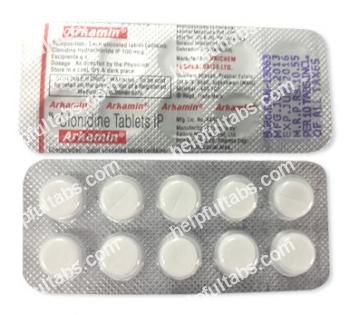






| Country | Shipping method | Delivery time | Price | |
|
|
 Delivery Delivery |
14-21 days | 10$ | Tracking# available in 4 days |
 Delivery Delivery |
9-14 days | 30$ | Tracking# available in 2 days |
Clonidine is available in oral form or as skin patches and is primarily used to treat high blood pressure. It works by altering the concentration of certain chemicals in the blood and stimulating alpha2-adrenoceptors in the brain stem. This reduces the transmission of signals from the brain to other parts of the body, leading to decreased peripheral resistance, renal vascular resistance, heart rate, and blood pressure.
Clonidine is typically taken twice daily, with the dosage adjusted based on individual blood pressure responses. It should only be used as prescribed by a physician. If using patches, apply them to a hairless area of the upper arm or torso, replacing the patch every seven days. Rotate the application site when changing patches.
Avoid consuming alcohol while using Clonidine. Exercise caution when driving or performing tasks that require high concentration.
Clonidine is contraindicated in cases of hypersensitivity to the drug or any of its components. It should also be avoided in patients with sick sinus syndrome, bradycardia, atrioventricular block (degree II and III), acute myocardial infarction, Raynaud's syndrome, endogenous depression, kidney failure, and other specific conditions.
Common side effects include allergic reactions such as hives, difficulty breathing, and swelling. Other potential side effects are:
Seek immediate medical attention if these symptoms occur.
Clonidine may increase the sedative effects of barbiturates, narcotic pain relievers, and alcohol. Certain antidepressants can reduce its effectiveness. Concurrent use with Cyclosporine may lead to kidney damage. Use caution when combining Clonidine with medications that lower heart rate, such as beta-blockers.
If you miss a dose, take it as soon as you remember. However, if it is almost time for the next dose, skip the missed dose. Do not take extra medication to compensate for the missed dose.
An overdose of Clonidine may cause symptoms such as severe headache, blurred vision, buzzing in the ears, anxiety, confusion, and chest pain, followed by low blood pressure, fainting, cold sensations, and slow heart rate. Seek immediate medical help in such cases.
Store Clonidine tablets and patches at room temperature (15-30°C / 59-86°F) in a light-resistant container away from moisture.
The information provided here is general and does not cover all possible directions, drug interactions, or precautions. It should not be used for self-diagnosis or self-treatment. Always consult your healthcare provider for specific instructions. We are not responsible for any errors in the information or for any consequences that may arise from its use.